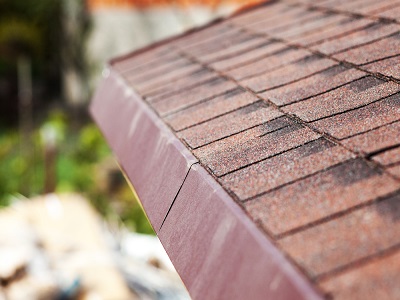
A sagging roof can be caused by a variety of factors, including excess weight and poor installation. While we have provided some tips on how to fix a sagging roofing system yourself, it is important to know when to call a professional.
The roof protects your home from the elements, such as strong winds and heavy snowfall. Your roof may need to be repaired if it curves or dips in any way. There are many factors that can cause a sagging roofing system.
Although some roofs may not be at risk of falling, excessive sagging can pose a serious problem that must be addressed immediately. This project is best left to experienced roofing contractors due to its difficulty.
Before you Begin…
A sagging roof can be a complicated job. To avoid costly roof repairs or to risk of damaging your roof, you will need to have roofing experience. To determine why your roof is sagging, and what is causing it to droop, a thorough roof inspection is necessary. This crucial step will help you determine the extent of damage and calculate material costs.
Broken trusses and rafters may cause roof sagging. The cost of roof repair will depend on the extent of the damage. The cost of repair can go up if structural beams are damaged. However, costs could be lower if only a portion of the roof is being repaired.
Tips to Fix a Sagging Roof
 Start by taking a look from the curb at your house. Next, walk around the whole house to assess any sagging, bowing or dips.
Start by taking a look from the curb at your house. Next, walk around the whole house to assess any sagging, bowing or dips.
If you have one, take a camera to the attic so that you can photograph the damaged trusses and rafters.
To ensure that they aren’t damaged, inspect the metal gusset plates or plywood.
Safety considerations
- Avoid entering your attic, as they can be dark and cramped. You might consider adding additional lighting.
- Use safety glasses, gloves, and masks with the appropriate filters when fixing a sagging roof.
- A roofing system that is severely sagging can pose a danger and could cause injury or death.
Examine the roof for damage and repair.
You will first need to check the roof for signs of sagging. It is a good idea for you to inspect the roof from the street. Next, take a flashlight with you and go up to the attic to inspect the roof. This can help you to see the extent of the damage. Your roof truss construction is what supports the roof. Cracks, rotting and breakage are all signs of damage. Most sagging roofs are caused by damaged trusses and rafters.
Make holes in a steel “L” channel.
Restoring a truss or rafters is the most difficult part of the job. This can be accomplished by using a steel L channel that is no less than 1 1/2 inches wide and 1 1/2 inches deep. You will need to drill four holes at the base and four holes on the sides of the steel L channel. You should space the holes evenly.
Take out any wood chips or splinters.
Next, remove any wood fragments from the truss and rafter. Debris and broken pieces of wood can cause problems with the alignment of the beam or truss. It is important to remove chips and splinters from the wood.
Tip: A chisel, reciprocating saw or a chisel are the best tools to remove broken pieces of wood. These can be used for rough cutting or demolition.
Call Restoration Roofing TX now if you need help in repairing your sagging roof.
Like our Facebook page for more great info about roofing services.
Restoration Roofing TX
Keller, TX 76248
817-717-6220
https://restorationroofingtx.com/%20
info@restorationroofingtx.com
Fort Worth, TX
682-255-1550
Serving: Fort Worth, Keller TX, Denton County TX, Tarrant County, Arlington TX, North Richland Hills TX, Roanoke TX, Hurst TX, Southlake TX, Grapevine TX, Flower Mound TX, Haltom City TX, Bedford and Haslet TX, Colleyville TX, Denton TX, Lewisville TX, Euless TX, Grand Prairie TX, Azle TX

No comments:
Post a Comment